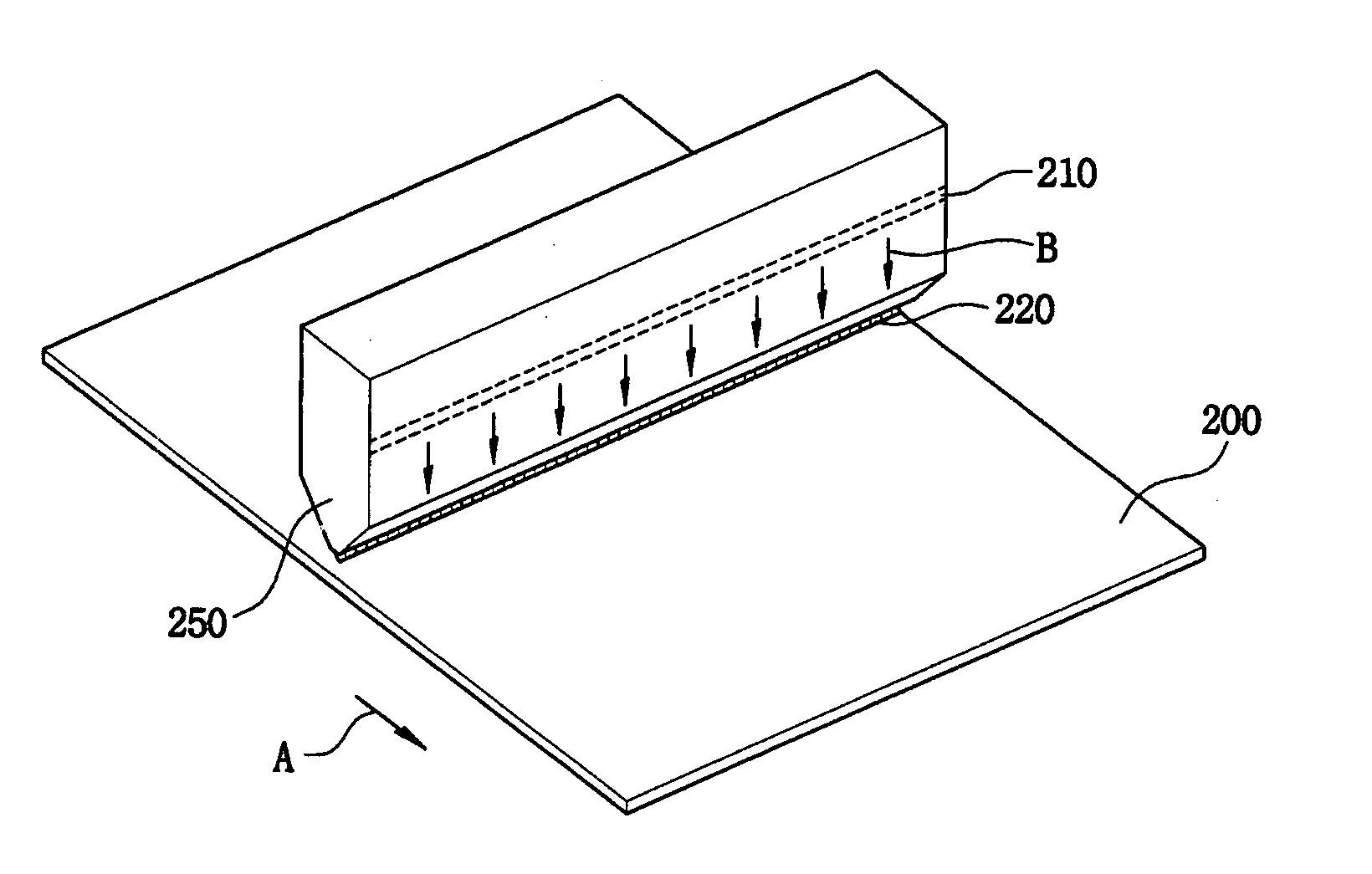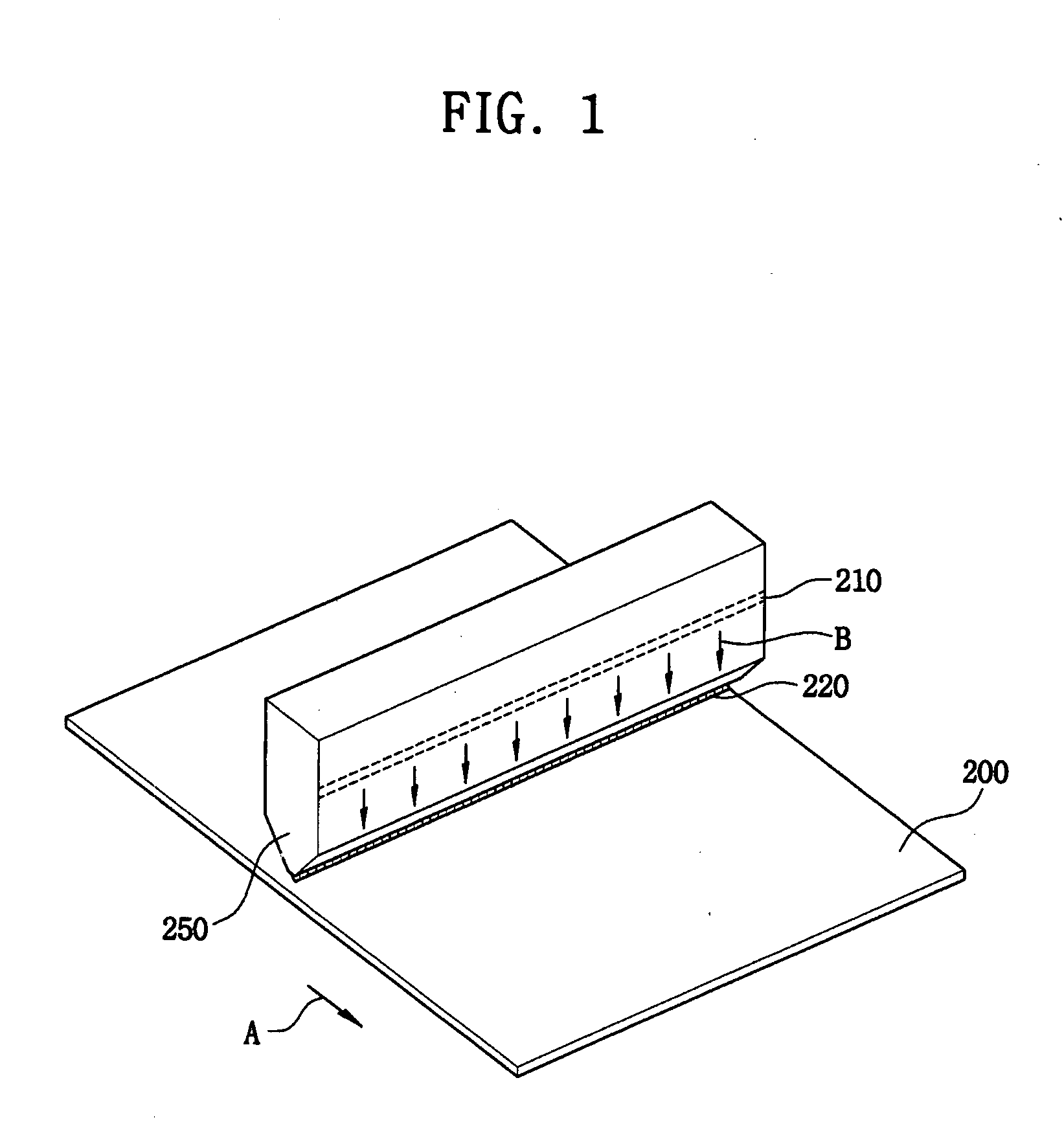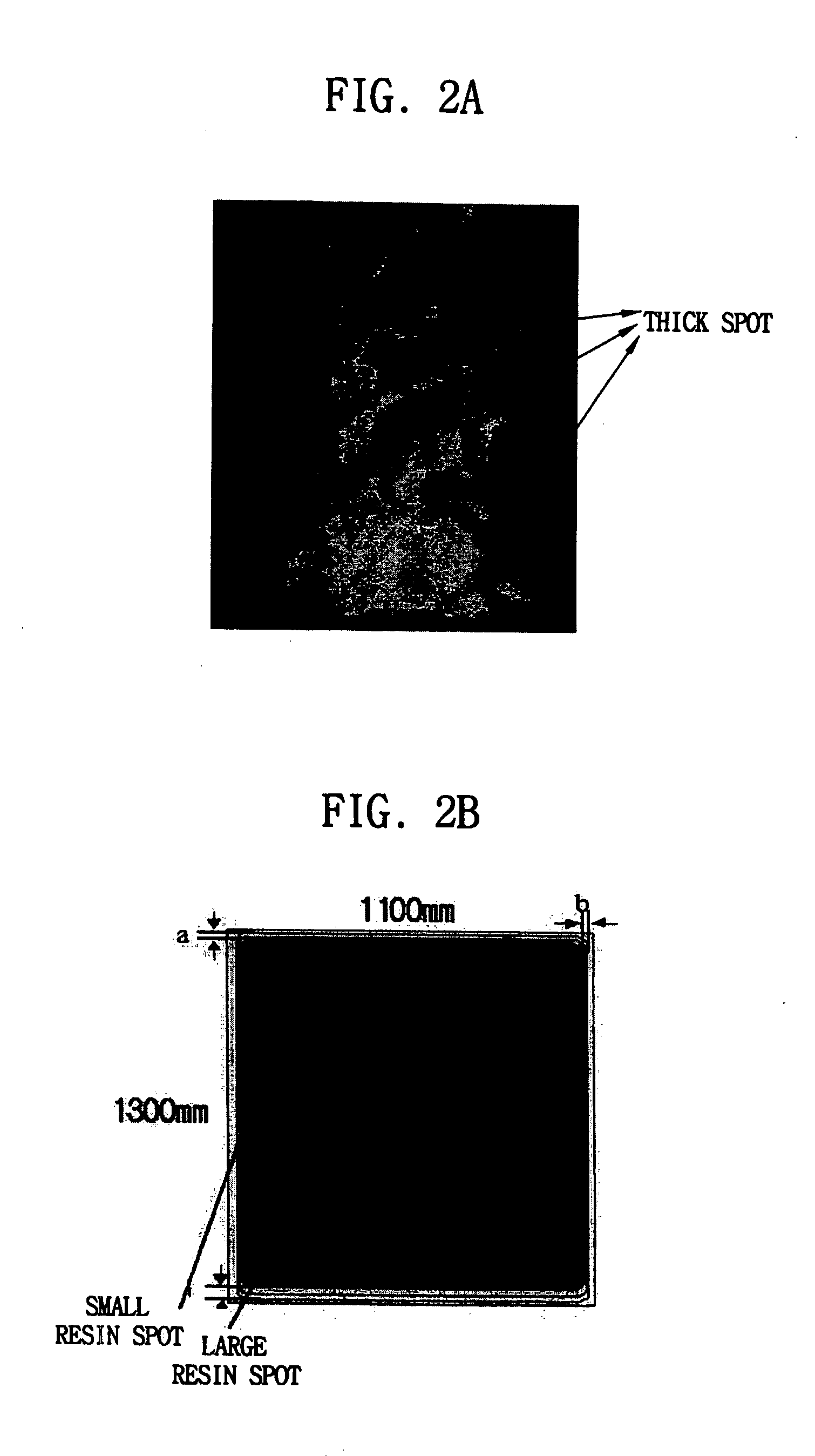Photoresist composition for a spinless coater and method of forming a photoresist pattern using the same
a coating and composition technology, applied in the direction of photomechanical equipment, instruments, photomechanical treatment, etc., can solve the problems of many failures in the process of manufacturing the liquid crystal display equipment, failures in subsequent processes, uneven photoresist film, etc., to reduce the manufacturing cost and processing time.
- Summary
- Abstract
- Description
- Claims
- Application Information
AI Technical Summary
Benefits of technology
Problems solved by technology
Method used
Image
Examples
example 1
[0083] 16.7 g of a novolak resin having a weight average molecular weight of 9,000, 3.3 g of a photosensitive compound, 0.15 g of a surfactant and 80 g of a volatile organic solvent were mixed at room temperature at a speed of 40 rpm to obtain a photoresist composition. The photosensitive compound is a mixture of 2,3,4,-trihydroxy benzophenone-1,2-naphthoquinone diazide-5-sulphonate and 2,3,4,4′-tetrahydroxy benzophenone-1,2-naphthoquinone diazide-5-sulphonate in a ratio of 5:5 by weight. The surfactant is polyoxyalkylene dimethylpolysiloxane, and the volatile organic solvent is a mixture of propylene glycol methyl ether acetate (PGMEA) and ethyl-p-ethoxypropionate (EEP) in a ratio of 90:10 by weight.
[0084] The viscosity of the photoresist composition was determined at 25□ using a Cannon-Fenske viscometer of Cannon Instrument Company of U.S.A. (150-762E). The viscosity of the photoresist composition was 5.00 cP.
[0085] The photoresist composition was applied to a glass substrate ha...
example 2
[0086] The same procedure as Example 1 was repeated except that a mixture of propylene glycol methyl ether acetate (PGMEA), ethyl-β-ethoxypropionate (EEP) and n-propyl acetate (nPAC) in a ratio of 80:10:10 by weight was used as the volatile organic solvent instead of the mixture of propylene glycol methyl ether acetate (PGMEA) and ethyl-β-ethoxypropionate (EEP) in a ratio of 90:10 by weight. A photoresist composition and a photoresist film were obtained. The viscosity of the photoresist composition was determined at 25□ using a Cannon-Fenske viscometer of Cannon Instrument Company of U.S.A. (150-762E). The viscosity of the photoresist composition was 4.61 cP.
example 3
[0087] The same procedure as Example 1 was repeated except that a mixture of propylene glycol methyl ether acetate (PGMEA) and n-propyl acetate (nPAC) in ratio of 90:10 by weight was used as the volatile organic solvent instead of the mixture of propylene glycol methyl ether acetate (PGMEA) and ethyl-β-ethoxypropionate (EEP) in a ratio of 90:10 by weight. A photoresist composition and a photoresist film were obtained. The viscosity of the photoresist composition was determined at 25□ using a Cannon-Fenske viscometer of Cannon Instrument Company of U.S.A. (150-762E). The viscosity of the photoresist composition was 4.56 cP.
PUM
| Property | Measurement | Unit |
|---|---|---|
| viscosity | aaaaa | aaaaa |
| thickness | aaaaa | aaaaa |
| viscosity | aaaaa | aaaaa |
Abstract
Description
Claims
Application Information
 Login to View More
Login to View More - R&D
- Intellectual Property
- Life Sciences
- Materials
- Tech Scout
- Unparalleled Data Quality
- Higher Quality Content
- 60% Fewer Hallucinations
Browse by: Latest US Patents, China's latest patents, Technical Efficacy Thesaurus, Application Domain, Technology Topic, Popular Technical Reports.
© 2025 PatSnap. All rights reserved.Legal|Privacy policy|Modern Slavery Act Transparency Statement|Sitemap|About US| Contact US: help@patsnap.com



